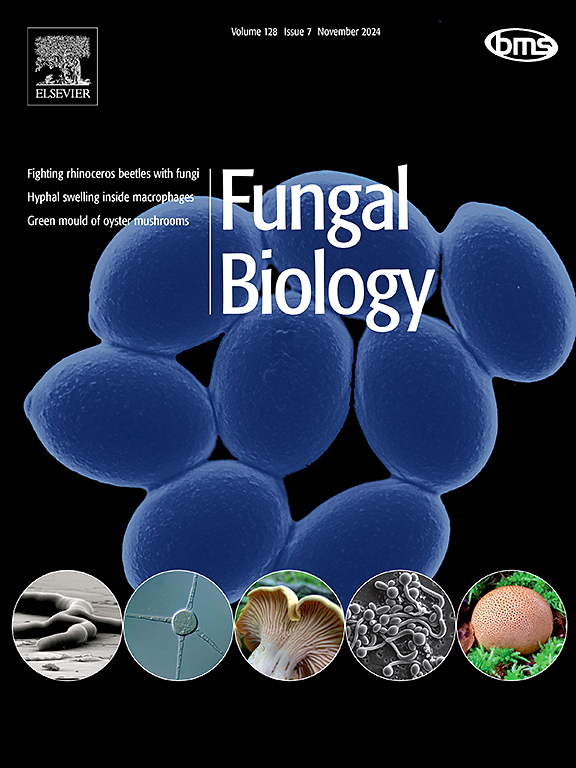引领镰刀菌菌种群:寄主范围的可塑性和基因组变异
IF 2.9
3区 生物学
Q2 MYCOLOGY
引用次数: 0
摘要
Ascomycete Fusarium属由Link于1809年首次引入,目前由431种和3558种未分类的分离株和杂交种组成(根据NCBI Taxonomy列表)。总的来说,这些真菌有不同的生活方式和感染周期,利用广泛的环境、宿主、生态位和营养来源。在这里,我们进行了泛镰刀菌物种回顾,以描述和探索病原和内生物种利用的迷人和不那么吸引人的生态位。我们调查了感染植物、人类、动物和/或无脊椎动物宿主的物种,居住在陆地、空气或水基自然生态系统中的自由生活的非致病性物种,以及利用人类改造环境或在工业生产系统中栽培的物种。189种镰刀菌已经有了完全测序、组装和注释的参考基因组,其中许多是染色体规模的。此外,对于一些世界上最重要的物种,广泛的单物种泛基因组或密切相关的物种基因组集群是现成的。以前的比较基因组学研究主要集中在镰刀菌种类的分类限制簇上。我们现在研究这些截然不同的镰刀菌生物学,生态位和环境占用及其各自基因组进化之间的潜在新关系。本文章由计算机程序翻译,如有差异,请以英文原文为准。
Navigating the Fusarium species complex: Host-range plasticity and genome variations
The Ascomycete genus Fusarium, first introduced by Link in 1809, currently consists of 431 species and 3558 unclassified isolates and hybrids (according to NCBI Taxonomy lists). Collectively, these fungi have diverse lifestyles and infection cycles exploiting a wide range of environments, hosts, ecological niches, and nutrient sources. Here, we carried out a pan-Fusarium species review to describe and explore the glamorous, and the less attractive niches, exploited by pathogenic and endophytic species. We survey species that infect plant, human, animal and/or invertebrate hosts, free-living non-pathogenic species dwelling in land, air or water-based natural ecosystems, through to those species that exploit human-modified environments or are cultivated in industrial production systems. Fully sequenced, assembled and annotated reference genomes are already available for 189 Fusarium species, many at chromosome scale. In addition, for some of the world's most important species extensive single species pangenomes or closely related formae speciales genome clusters are readily available. Previous comparative genomics studies have focussed on taxonomically restricted clusters of Fusarium species. We now investigate potential new relationships between these vastly contrasting Fusarium biologies, niches and environmental occupancies and the evolution of their respective genomes.
求助全文
通过发布文献求助,成功后即可免费获取论文全文。
去求助
来源期刊

Fungal biology
MYCOLOGY-
CiteScore
5.80
自引率
4.00%
发文量
80
审稿时长
49 days
期刊介绍:
Fungal Biology publishes original contributions in all fields of basic and applied research involving fungi and fungus-like organisms (including oomycetes and slime moulds). Areas of investigation include biodeterioration, biotechnology, cell and developmental biology, ecology, evolution, genetics, geomycology, medical mycology, mutualistic interactions (including lichens and mycorrhizas), physiology, plant pathology, secondary metabolites, and taxonomy and systematics. Submissions on experimental methods are also welcomed. Priority is given to contributions likely to be of interest to a wide international audience.
 求助内容:
求助内容: 应助结果提醒方式:
应助结果提醒方式:


